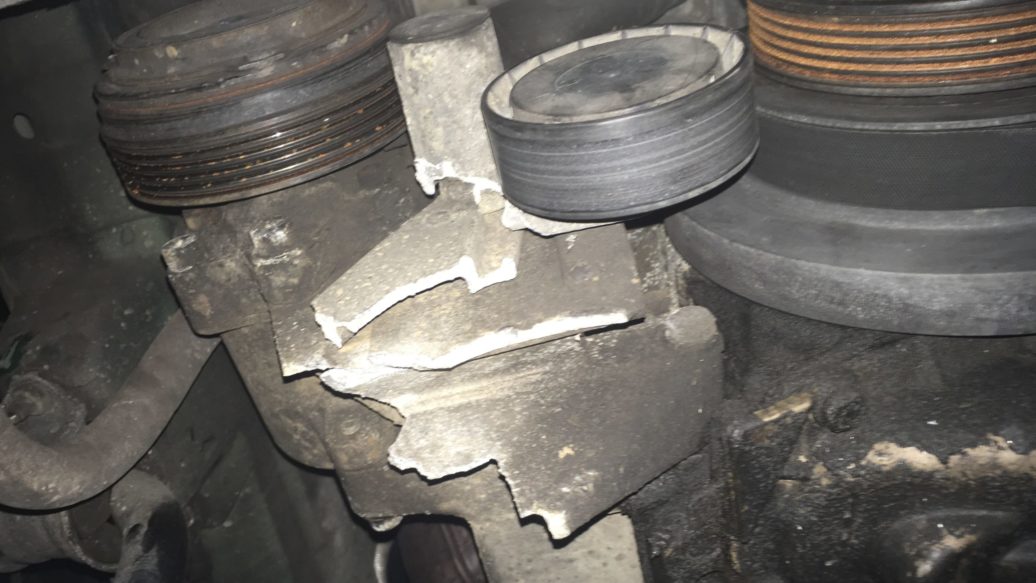Last week, after dealing with a no-start condition caused by a pinched wire, I got the clutch replacement completed and the transmission reinstalled in Zelda, the 1999 Z3 2.3i that I’d owned for six years, sold to a friend/neighbor, and bought back after her son put it up on a median strip in November. I took the car for a brief, triumphant (though illegal) spin around the block, as I hadn’t yet re-registered it. I then called Hagerty and re-insured the car with them. (Note that although Hagerty specializes in agreed-value policies on vintage cars, they will also insure more modern cars if the usage profile is acceptable; I also have my ’99 Z3 M coupe insured with them.) I had the kind of phone call with Hagerty that I live for, first being told that the incremental additional cost to my existing policy will be $14, then that the annual additional cost when the policy is renewed in March will be $78.
With the paperwork in process, I gave myself a little vacation from the Z3. When I said last week that with all the work under the car, I felt that I’d been run over by it, I really wasn’t kidding. While I love having the mid-rise lift in the garage, and while I went into great and gory detail on how it can be used to pull and reinstall a transmission, the geometry of the lift, with its angled legs that lie directly beneath the car’s transmission, proved particularly painful during the recent spate of work on the Z3, because my back was jammed up against the lift for long periods while my arms were snaked up around the bell housing trying to deal with the difficult-to-access Torx-head bolts. I really did feel like I’d been subjected to some highly-targeted garage-specific torture. So I gave it a couple of days and infusions of Advil before I ventured back out there to do further battle with Zelda.
Although the clutch repair was done, there was still buttoning-up to be done from the median strike. It fell into two main categories: damage to the front bumper cover and related plastic shrouding, and damage to the a/c system.
The front bumper cover—what most people would call the front spoiler or front air dam, except that it’s all one piece and covers the bumper—was already in poor condition even before the median-strip encounter. It was cracked in the middle and missing a lot of paint, likely from the flexing of prior owners having had too many encounters with parking blocks, speed bumps, and steeply-angled driveways. The median-strip collision completely splintered it on the right side of the mouth where the grille goes. I’d temporarily held it together with packing tape, but I wanted to do a little better than that.
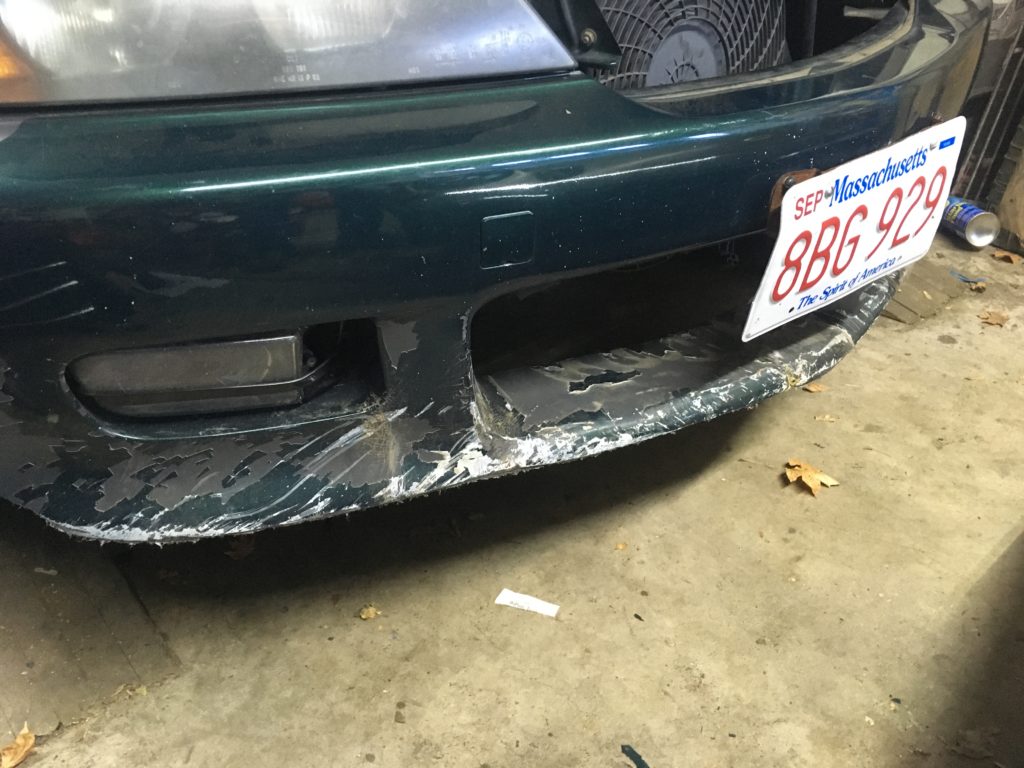
Zelda’s bumper cover kind of looked like hell to begin with…

…but the curb strike cracked it clean through.
Now, I regularly describe Zelda as “a little on the ratty side,” so initially I thought that I’d just wire-brush the edges of the cracks, squirt some Gorilla Glue into them, clamp it, and call it a day. However, the more I looked at the rest of the car, the more I decided that it really isn’t all that bad; an undamaged bumper cover would pull the look of the whole car together, so I began looking at cans of Boston Green spray paint on eBay.
But then, looking at all the splintered fiberglass and cracked paint, I realized that it would look terrible if I all I did was spray over it, and began thinking about replacing the bumper cover instead. Aftermarket bumper covers appear to be as inexpensive as about $240 shipped.
Then I wondered if I just should wait, watch eBay, and see if I can find a used one that matches the car’s Boston Green color. So for the moment, I’ve done nothing (actually, I suppose that going into vulture mode and saving a search on eBay is doing something.)
Next was the car’s air-conditioning. I’ve done a lot of a/c work over the years, but I never really thought before about how exposed multiple components of a car’s air-conditioning are to front-end collisions. As I wrote in November, when Zelda hit the median strip, the primary impact from curb strike was borne by the car’s front wheels, which in turn bent the lower control arms. The fact that the curbstone surrounding the median was low completely spared the car’s sheet metal, but it also directly damaged three separate parts of the a/c system. The first and worst was the aluminum bracket for the compressor, the bottom of which was sheared off by the curb.

It hurts just to look at.
The second was the a/c condenser, the component that sits in front of the radiator and dumps heat. The bottom of the condenser was bent back by the curb strike, which likely meant that the tubing was cracked and it was no longer holding refrigerant.
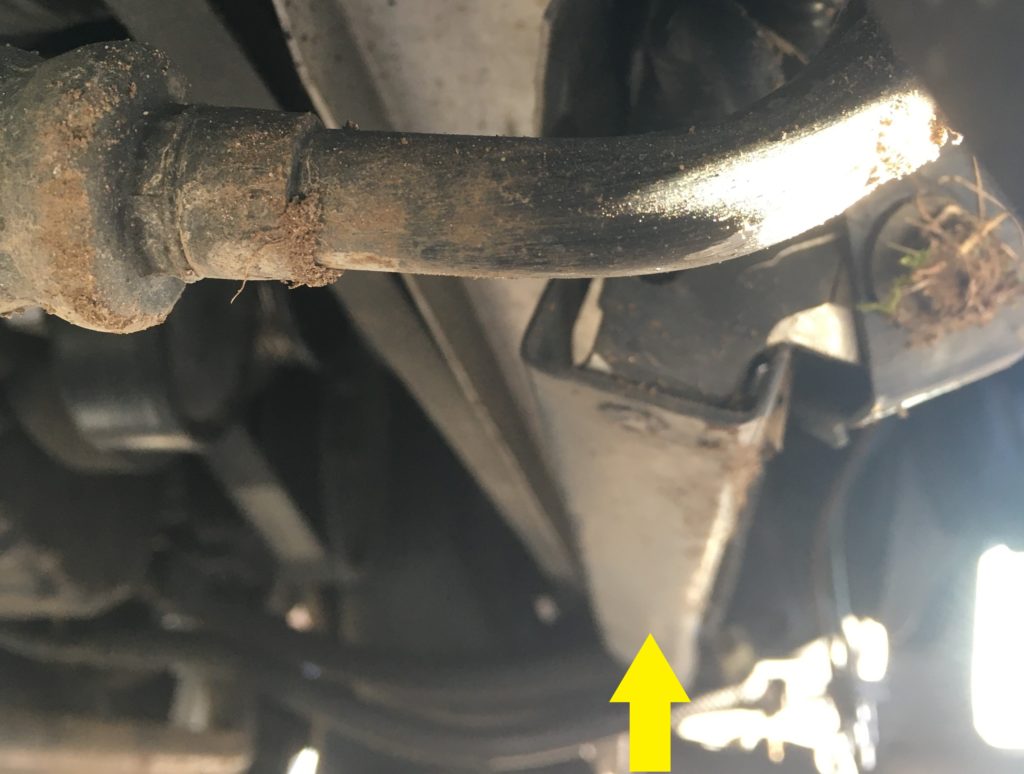
The bottom of the condenser shouldn’t be pushed back like this.
Finally, the bottom of the housing on the electric fan that cools the condenser was torn away by the impact and was missing on both sides, leaving the fan unsecured. Along with that, the electrical plug had been ripped out of its socket.
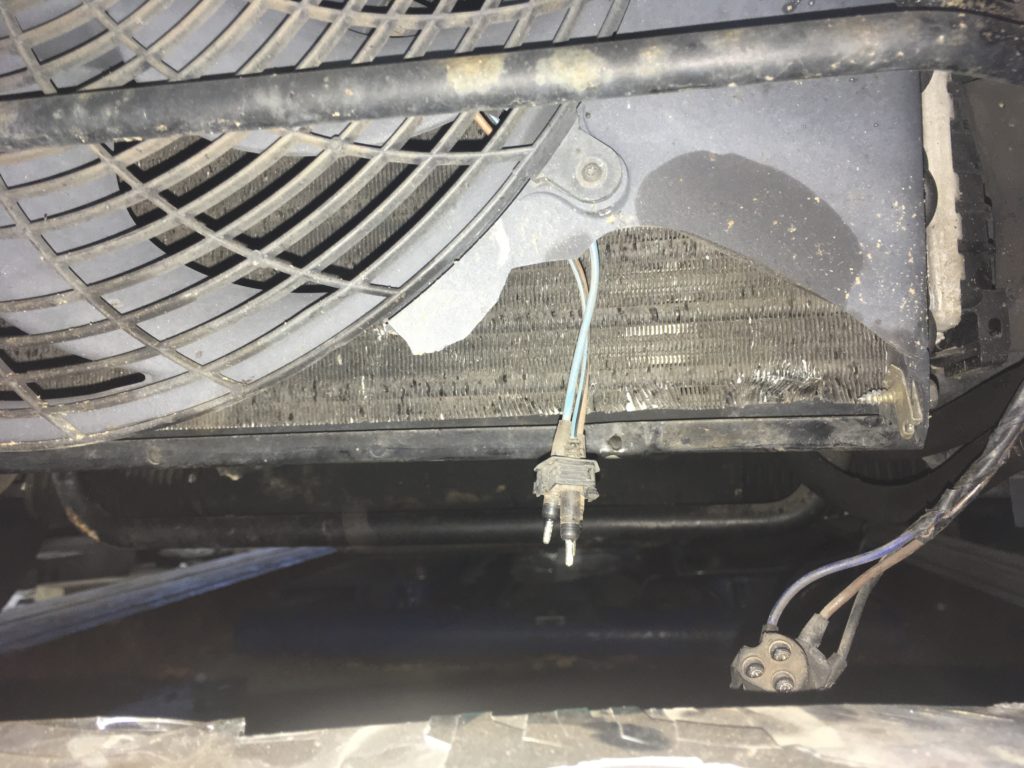
Double whammy on the condenser fan.
Taken collectively, the on-the-books cost necessary to revive Zelda’s a/c probably would’ve been enough to total the car all by itself.
Now, many folks think that air-conditioning is fundamentally at odds with a canvas-top roadster’s wind-in-the-hair ethos, and I suppose they’re partially right. If the main use of a roadster is stress-busting pleasure driving, the top will probably always be down unless you find yourself heading straight for a squall line of Wizard-Of-Oz-level black clouds. However, anyone who’s ever actually owned a convertible will tell you that if you use it regularly, it’s easy to start off a drive with the top down, livin’ the dream, only to find yourself getting baked by hot weather and direct sun, at which point you stop, put up the top, and turn on the a/c.
I was keenly aware of the real-world usefulness of roadster air-conditioning when I bought back Zelda and saw how much of the a/c was broken. Adding up the car’s inexpensive repurchase price, the replacement cost of the bent suspension and steering components, and the clutch-related parts, along with with my free labor, meant that I now had about $1,300 in the car, which is damn good for a running and driving six-cylinder Z3. I felt like I had a little spending room. But even so, Zelda is highly unlikely to ever be a car in which I drive 2,000 steamy round-trip miles to the Vintage, like the classic BMWs I’ve spent ridiculous amounts of time getting sorted with cold a/c. The idea of spending serious coin replacing the condenser and the fan and the compressor bracket didn’t sit well with me.
So I began with a simple assessment: Did the a/c system still have refrigerant in it? If so, the system hadn’t been breached. If not, resurrecting it would include not only replacing the damaged components, but also possibly needing to flush the system . I hooked up the manifold gauge set, and was delighted to see the presence of pressure. It was low, but then again, it was probably only 40 degrees in the garage, and pressure increases with temperature.
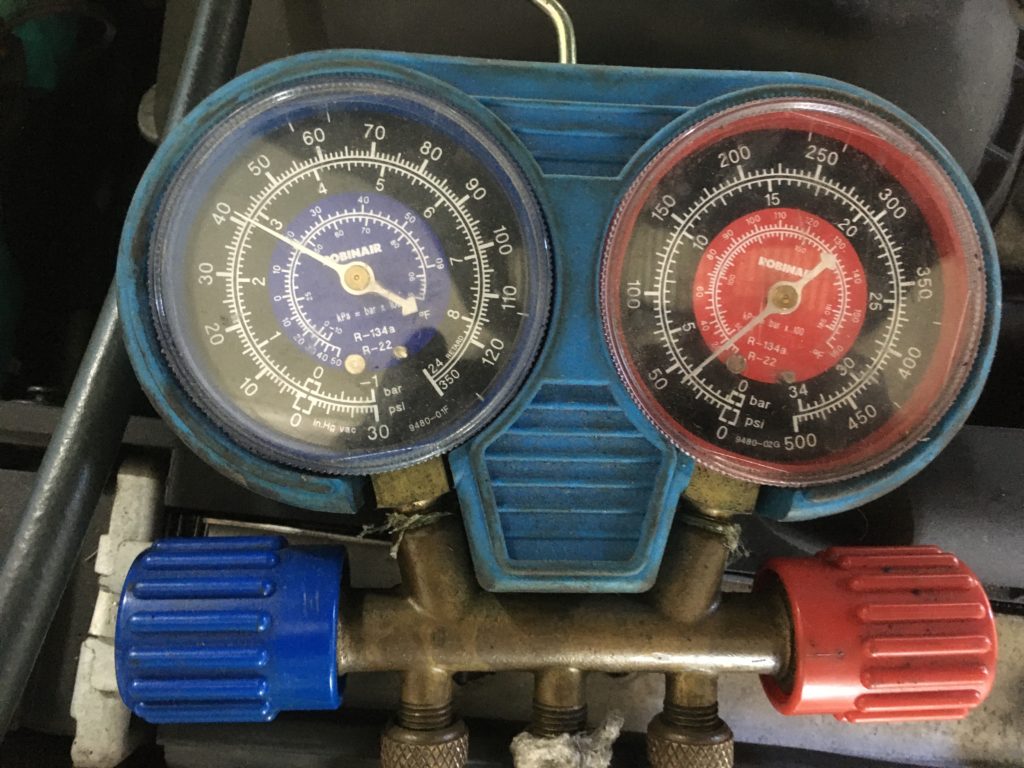
Oh, yeah.
With that, I looked on eBay and was thrilled to find a used compressor bracket complete with the idler pulley and tensioner for $30 shipped.
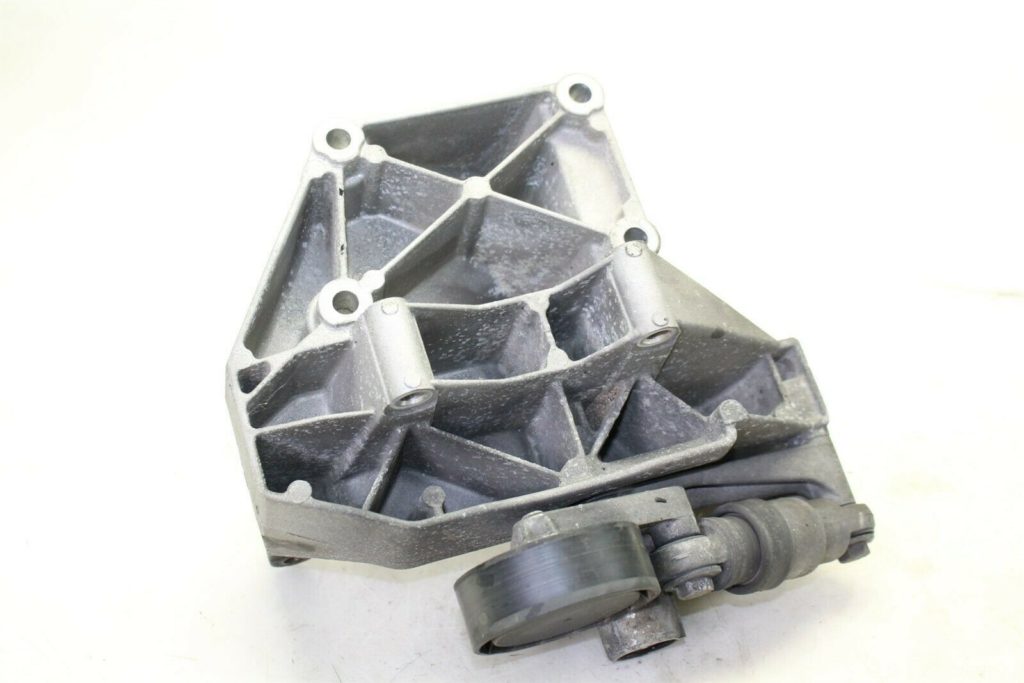
Score!
Next I looked at replacing the condenser fan. Unfortunately, Part Number 64548397474 appears to be Z3-specific, and it is not inexpensive; the list price is $549, although used fan assemblies show up on eBay in the $160 to $200 range. The fact that the bottom part of the car’s fan housing was broken off meant that that I’d need to do something to secure it, but that was a moot point if the fan motor itself didn’t work. I carefully plugged the torn-apart connector back together, taking care to make sure that I had the pins in their correct sockets, turned on the a/c, and verified that the fan still spun. It did, however, rub against the broken housing while turning, because the whole thing had taken on a twist, so in order to use it, I’ll need to fabricate a bracket to keep it from rubbing.
Anyway, I do appear to have a cost-effective path forward to resurrecting the car’s a/c.
But I have to tell you, the 40-degree temperatures in the garage dampen my enthusiasm a bit. I can turn on the heat, but doing this a/c work in a roadster still seems fundamentally out of sync with some big seasonal clock. I’d have a lot more energy in installing a pre-painted bumper cover, if I could find one.—Rob Siegel
Rob’s latest book, The Lotus Chronicles: One man’s sordid tale of passion and madness resurrecting a 40-year-dead Lotus Europa Twin Cam Special, is now available here on Amazon. Signed copies of this and his other books can be ordered directly from Rob here.

